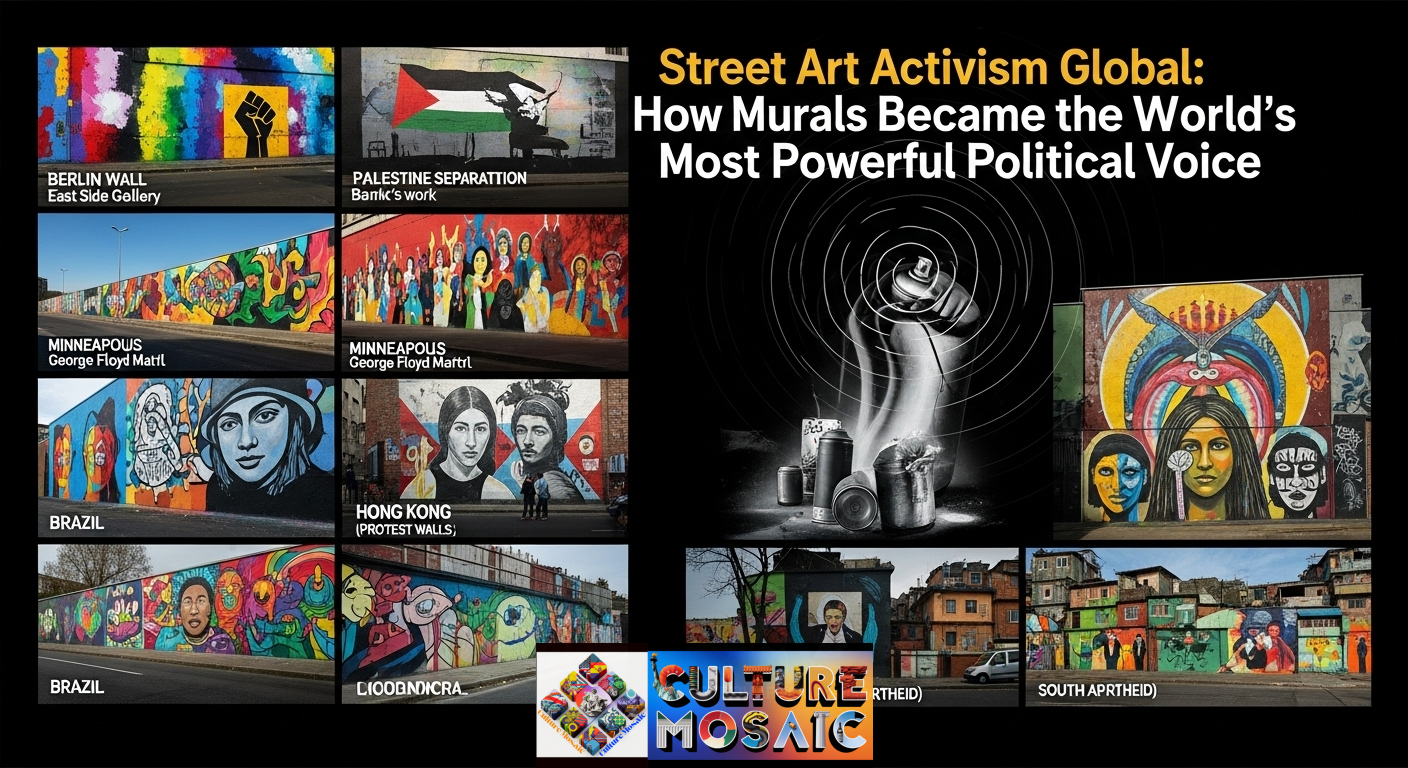When a single mural in Minneapolis sparked a global movement after George Floyd’s death, it proved something remarkable. Street art activism global networks had evolved into one of the most immediate and powerful forms of political expression on Earth.
From the favelas of Rio to the separation barrier in Palestine, from Hong Kong’s protest-covered streets to Black Lives Matter murals across America, street art has become the visual language of resistance. This isn’t just paint on walls. It’s democracy in action, rendered in spray cans and stencils.
Understanding Street Art Activism Global Movements
Street art activism global campaigns represent a fusion of artistic expression and political engagement that transcends traditional protest methods. Unlike demonstrations that end when crowds disperse, murals remain as constant reminders of social issues, silently advocating for change 24 hours a day.
The phenomenon operates on a simple premise. Public spaces belong to everyone, so art placed there becomes a democratic conversation starter. When Chilean artists covered Santiago with protest murals during the 2019 uprising, they weren’t just decorating buildings. They were reclaiming public space and forcing conversations about inequality that traditional media often ignored.
What makes street art activism global in scope is its universal accessibility. You don’t need gallery connections, formal training, or permission from cultural gatekeepers. You need a message, some paint, and the courage to put both on a wall. This low barrier to entry has democratized political art in ways previous generations couldn’t imagine.
The Evolution of Street Art Activism Global Networks
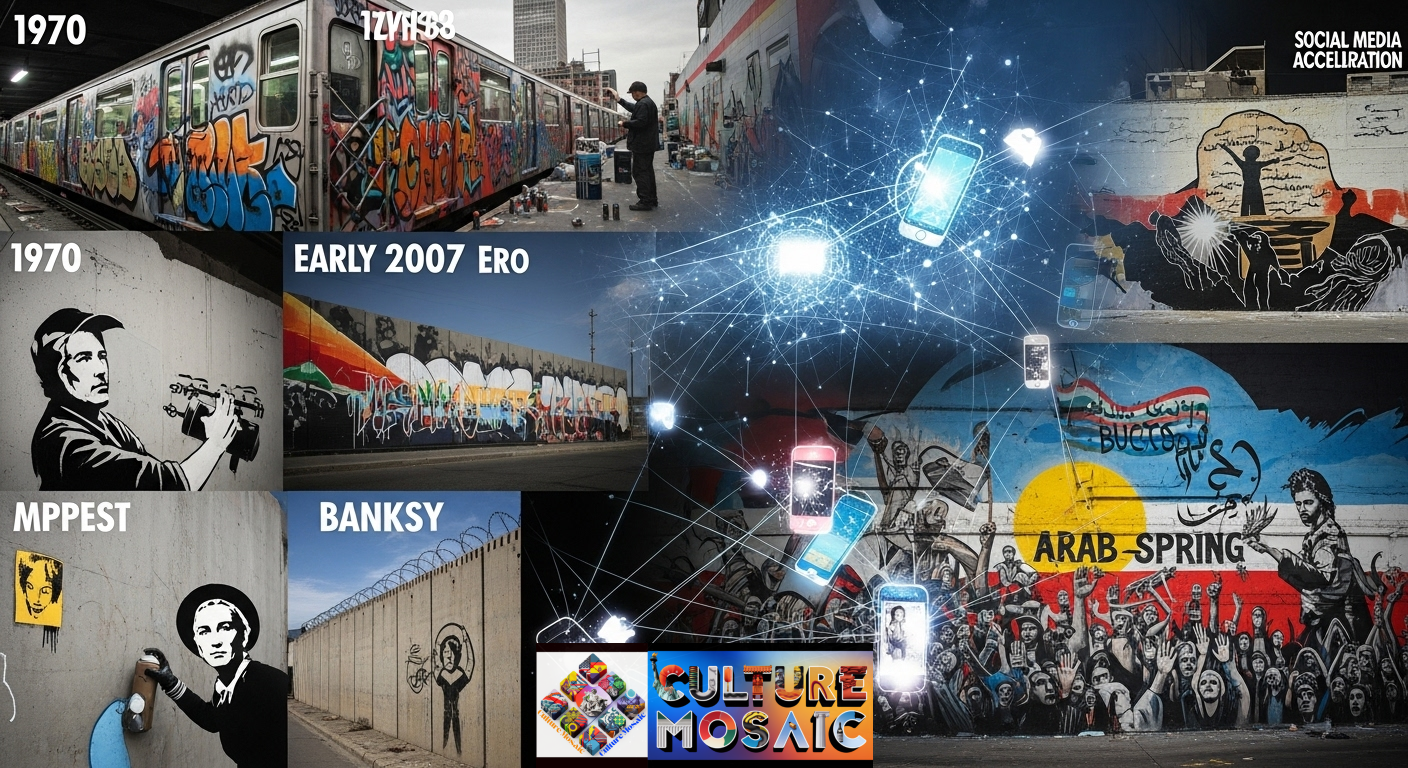
Street art activism and global movements didn’t appear overnight. They evolved from the graffiti culture of 1970s New York, where artists like Keith Haring transformed subway stations into galleries addressing AIDS awareness and apartheid.
The turning point came when artists realized walls could speak louder than megaphones. Banksy’s satirical stencils in the early 2000s demonstrated how a single image could generate more conversation than a thousand speeches. His work on the West Bank barrier turned concrete symbols of division into canvases for hope and critique.
Social media accelerated everything. A mural painted in Buenos Aires at dawn can trend worldwide by lunch. Instagram transformed street art from local commentary into a global conversation. Artists no longer needed physical audiences when digital ones numbered in millions.
The Arab Spring showcased street art activism’s global potential during political upheaval. Egyptian artists covered Tahrir Square with revolutionary murals that became symbols of democratic aspiration. Even when authorities painted over them, photographs circulated online, proving you can destroy art but not the ideas it represents.
How Street Art Activism Global Campaigns Create Change
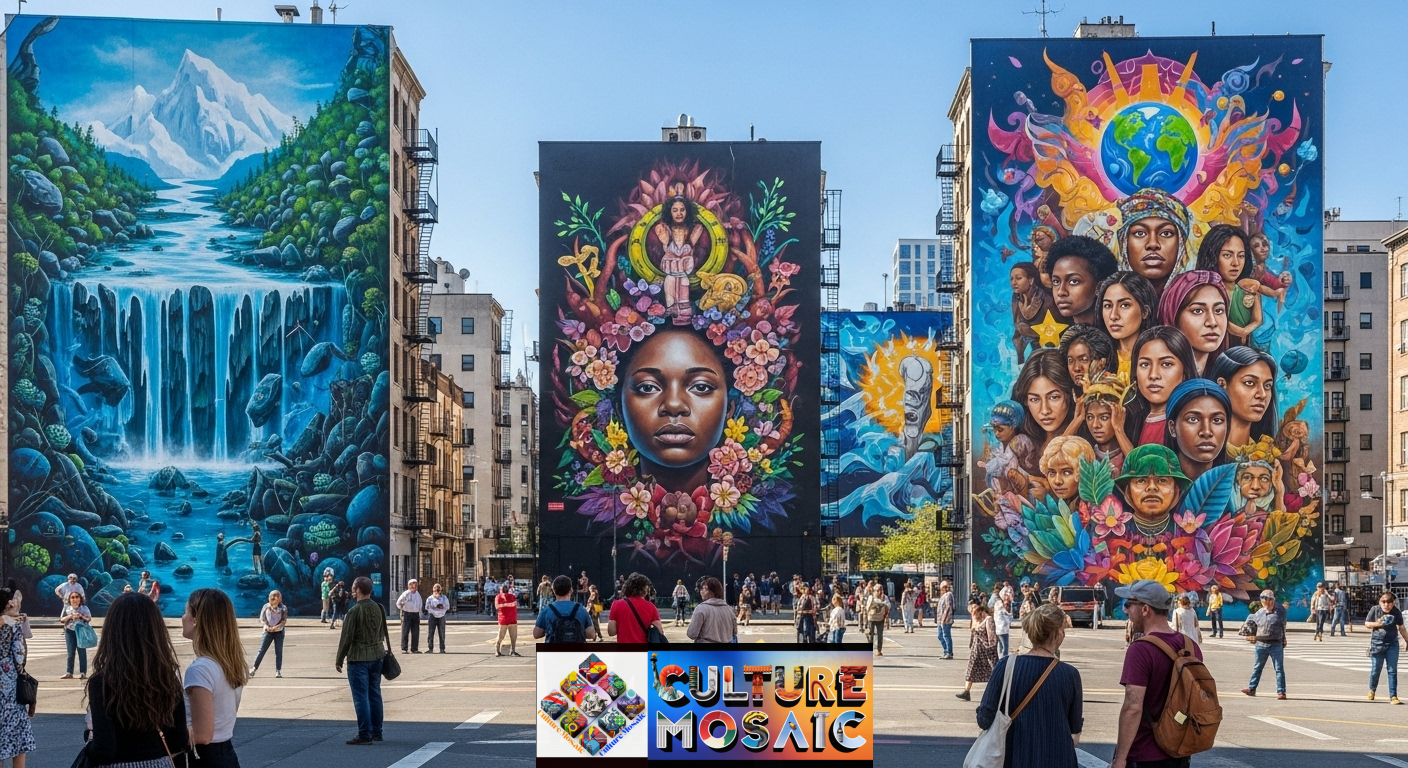
The mechanics of street art activism global impact and work on multiple levels simultaneously. First comes visibility. A 50-foot mural addressing climate change forces engagement from people who might scroll past online petitions. You can ignore a hashtag, but not a building-sized message on your commute route.
Second is emotional resonance. The best activist street art doesn’t just inform but moves viewers. Shepard Fairey’s “Hope” poster for Obama’s 2008 campaign became iconic because it captured aspiration visually. Similarly, murals honoring Breonna Taylor and other victims of police violence humanize statistics and keep attention focused on systemic problems.
Third comes conversation and community building. Murals become gathering spots and photo opportunities. They generate local pride and ownership. When Philadelphia’s Mural Arts Program engages communities in creating public art addressing issues like gun violence or addiction, the process itself becomes therapeutic and organizing.
The digital amplification effect multiplies all this. Every person photographing a mural and sharing it online becomes an unpaid advocate for its message. Street art activism global reach extends far beyond the physical location where paint meets wall.
Major Street Art Activism Global Hotspots
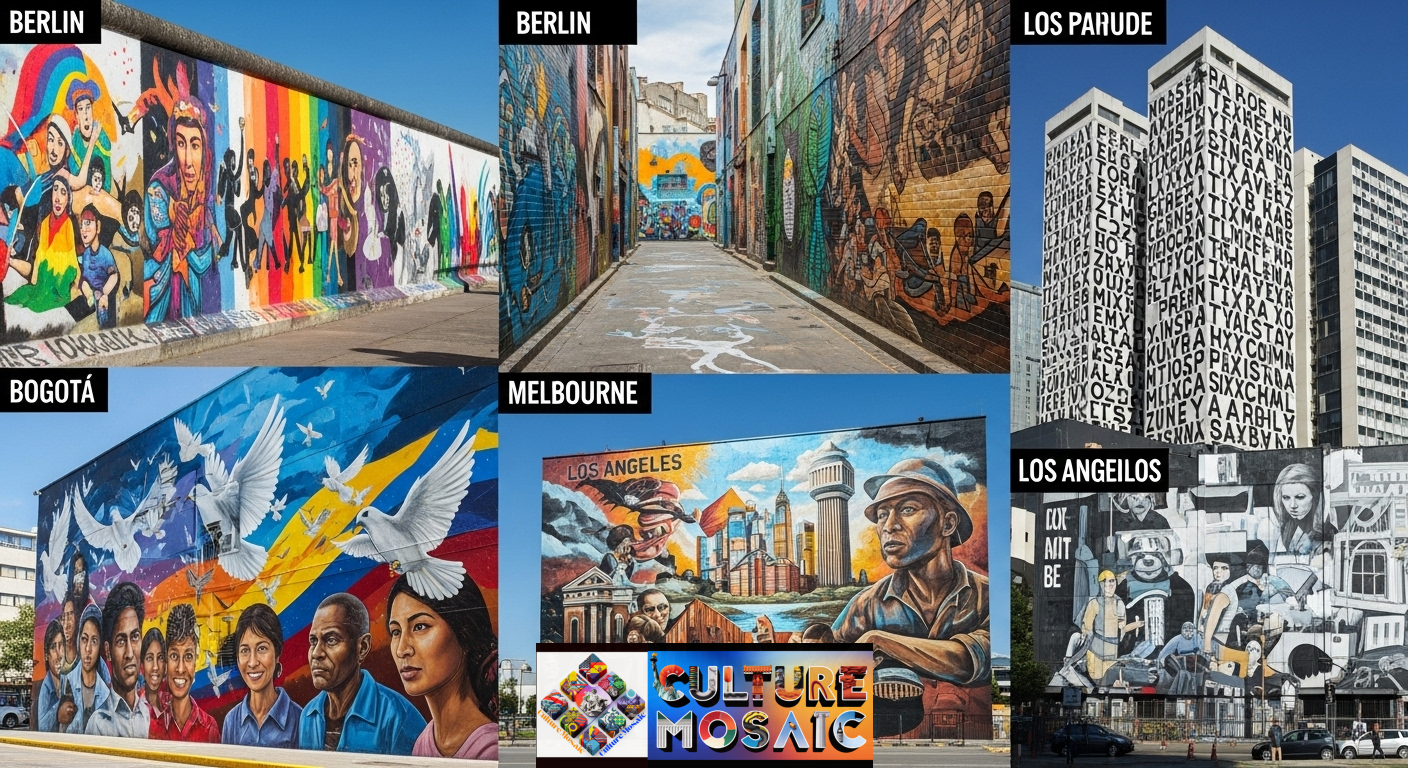
Certain cities have emerged as epicenters where street art activism global movements flourish with particular intensity.
Berlin’s graffiti culture remains legendary, with the East Side Gallery transforming sections of the Berlin Wall into the world’s longest open-air gallery. Artists from everywhere contribute pieces addressing everything from refugee rights to LGBTQ+ equality.
Melbourne’s laneways have become globally recognized for politically charged murals. Australian artists use these spaces to address indigenous rights, environmental destruction, and social inequality. The city government’s relatively permissive approach has created an environment where street art activism global dialogue happen organically.
Bogotá underwent a dramatic shift after police killed a teenage graffiti artist in 2011. Public outcry led to legalized street art zones, and now the city hosts some of South America’s most politically engaged murals addressing Colombia’s complex history with violence and peace.
Los Angeles hosts massive murals in neighborhoods from Downtown to Venice Beach. The city’s street art activism global perspective reflects its diversity, with artists addressing immigration, gentrification, police accountability, and workers’ rights through large-scale public works.
São Paulo’s pixação tradition, a distinctive Brazilian form of protest graffiti, covers high-rise buildings with messages about class inequality. While controversial and illegal, it represents pure street art activism global expression, visible to everyone and controllable by no one.
The Artists Driving Street Art Activism Global Conversations
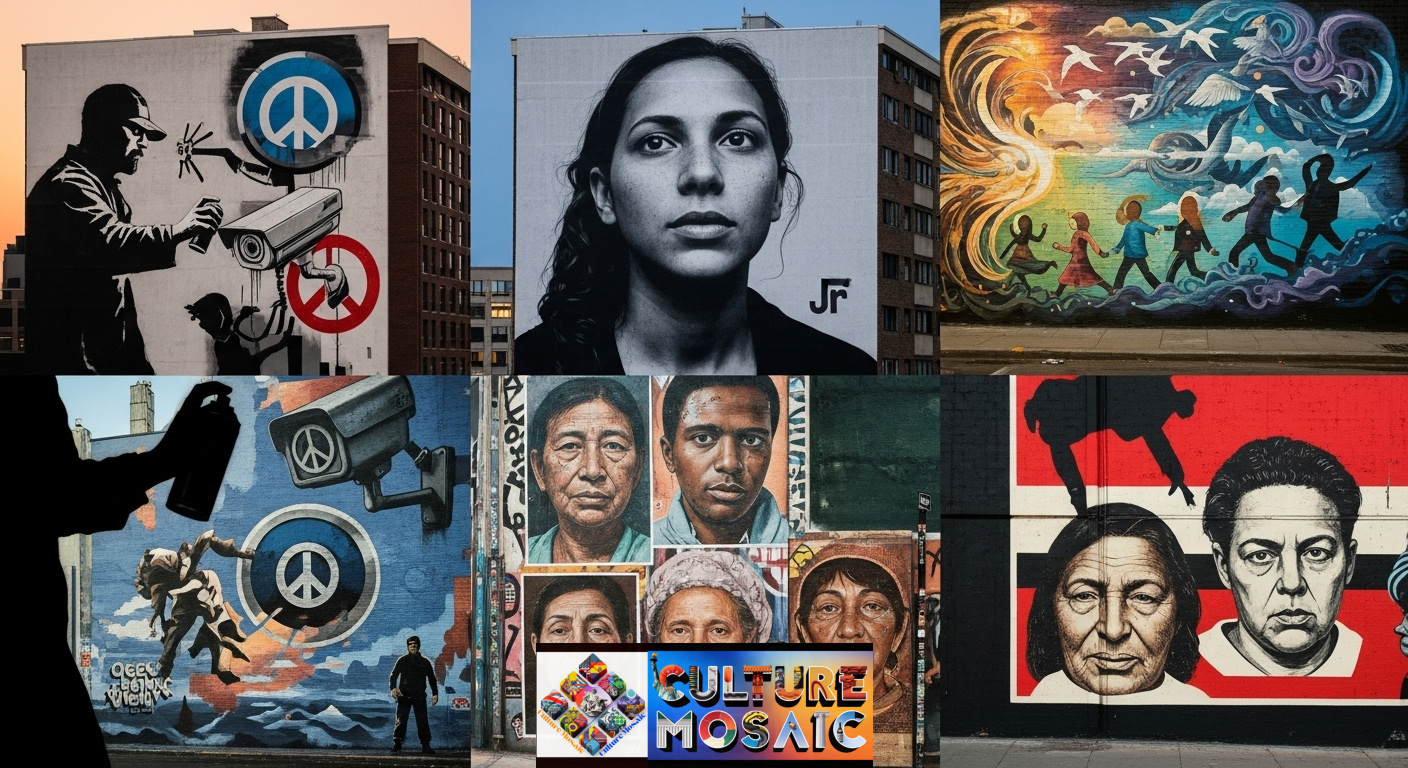
Individual artists have become synonymous with street art activism global movements through their distinctive styles and uncompromising messages.
Banksy remains the most recognizable name, though his anonymity adds mystique. His work satirizes capitalism, war, surveillance, and inequality. When he shredded a painting after it sold for over a million dollars, he critiqued the art market itself. His installations in places like Gaza and Calais refugee camps bring attention to humanitarian crises.
JR, a French artist, creates massive photographic installations that give voice to marginalized communities. His Women Are Heroes project placed giant images of women’s faces in Brazilian favelas, Kenyan slums, and Indian neighborhoods, celebrating dignity in places often defined by poverty.
Faith47 from South Africa creates hauntingly beautiful murals addressing post-apartheid social issues, migration, and inequality. Her work demonstrates how street art activism global messaging can be both aesthetically compelling and politically urgent.
Swoon’s wheat-paste portraits of everyday people humanize homelessness and addiction. Her installations in New Orleans after Hurricane Katrina highlighted abandonment and resilience, showing how street art activism global practices apply to local disasters.
Shepard Fairey’s Obey Giant campaign evolved from skateboard stickers to massive murals addressing environmental protection, voting rights, and social justice. His ability to create instantly recognizable imagery makes complex political issues visually accessible.
Street Art Activism Global Impact on US Cities
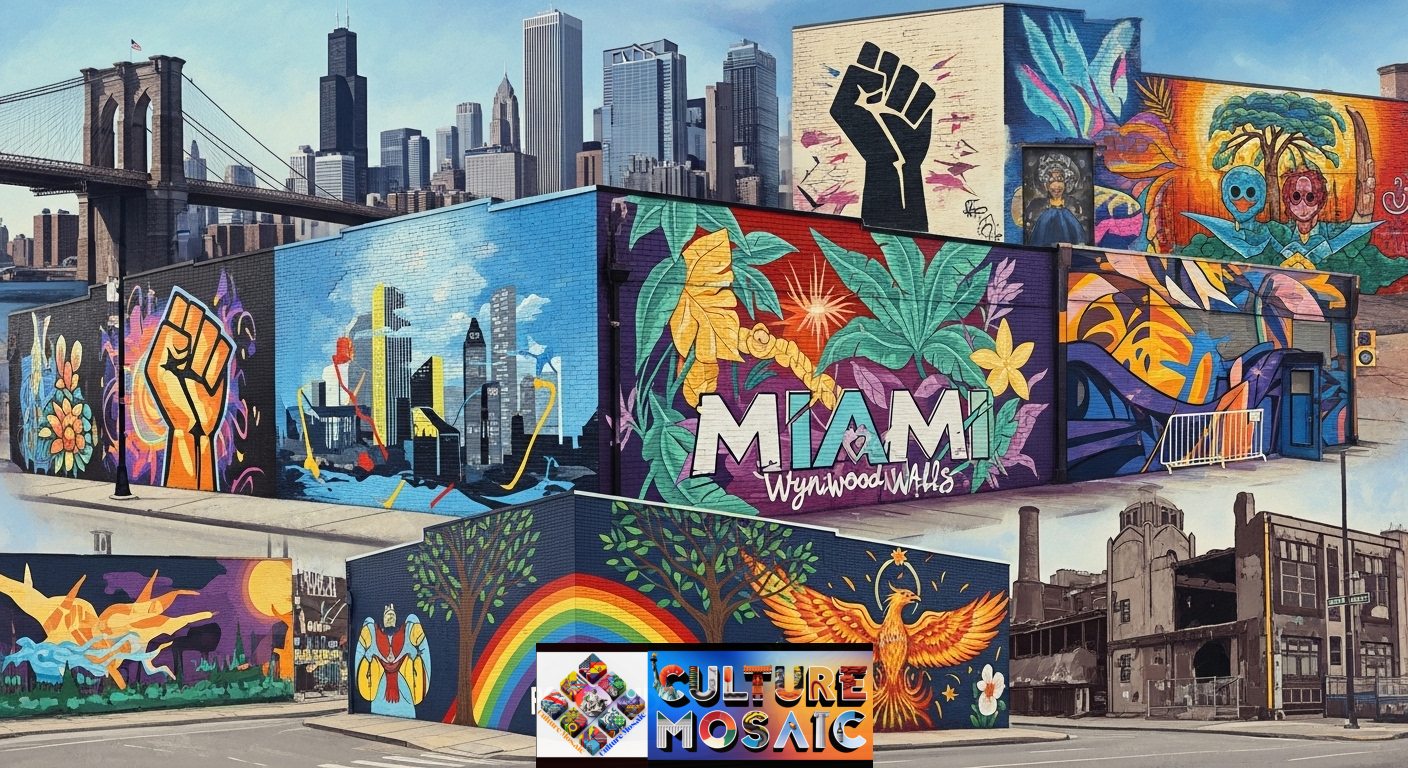
American cities have witnessed transformations as street art activism global trends reshape urban landscapes and conversations.
New York’s relationship with street art has evolved from Giuliani-era zero tolerance to Bloomberg’s grudging acceptance to current recognition of murals as cultural assets. The Bushwick Collective in Brooklyn hosts internationally recognized artists creating pieces about everything from gentrification to mental health.
Chicago’s street art scene explodes with murals addressing gun violence, education inequality, and neighborhood pride. After the 2016 election, protest murals appeared overnight, transforming the city into a canvas for resistance.
Miami’s Wynwood Walls transformed a warehouse district into an international destination where street art activism global perspectives, meet Caribbean and Latin American influences. During Art Basel, political messages compete with purely aesthetic works, proving commercial viability doesn’t require compromising activist intent.
Portland’s permissive approach to street art has created a city-wide gallery where Black Lives Matter murals coexist with environmental messages and LGBTQ+ pride pieces. The city’s progressive politics find natural expression in its streets.
Detroit leverages street art as part of its revival strategy. Murals addressing the city’s industrial past, racial history, and community resilience turn blight into beauty while keeping difficult conversations visible.
From Walls to Screens: Street Art Activism Global Goes Digital
The relationship between physical murals and digital platforms has created unprecedented amplification for street art activism global movements.
Instagram serves as the primary distribution mechanism. Artists tag locations, use movement-specific hashtags, and watch their work spread globally within hours. A mural in Johannesburg addressing water scarcity can inspire similar works in Los Angeles and Mexico City before the paint dries.
TikTok has introduced time-lapse documentation of mural creation, building anticipation and engagement. Videos showing artists transforming blank walls into powerful statements rack up millions of views, educating audiences about both technique and message.
Twitter threads analyzing street art activism global pieces bring academic rigor to street-level conversations. Scholars, journalists, and activists dissect symbolism, context, and impact, creating layers of meaning beyond the visual.
Some artists have embraced NFTs, creating digital versions of physical murals. While controversial in activist circles due to environmental concerns, this trend demonstrates how street art activism global practices adapt to technological change.
The documentation dilemma presents interesting questions. When murals are painted over or destroyed, digital records preserve them. But does a photograph carry the same power as encountering a piece in person? Most artists argue that physical presence matters, that the scale and context create an impact impossible to replicate on screens.
Legal and Ethical Dimensions of Street Art Activism Global Practice
The tension between legality and legitimacy defines much street art activism global debate.
Commissioned murals occupy safe legal ground but raise questions about co-optation. When city governments or corporations sponsor activist art, does it lose its edge? Some argue commissioned work reaches wider audiences and gains protection. Others contend that asking permission defeats the point of public art as disruption.
Illegal work carries risks including arrest, fines, and criminal records. Yet many artists consider these risks essential to authentic activism. If you need permission to protest, is it really a protest? Banksy’s most powerful work remains illegal, proving sometimes impact requires accepting legal consequences.
The commodification problem grows more acute as street art activism global visibility increases. When protest art sells for six figures at auction, something fundamental shifts. Artists navigate this tension differently. Some embrace commercial success as a platform for expansion. Others refuse gallery representation, insisting their work belongs on the streets, not in collections.
Gentrification presents the cruelest irony. Murals that beautify struggling neighborhoods sometimes accelerate their transformation into expensive areas that displace the communities the art originally represented. Street art activism global practitioners increasingly grapple with their role in urban development processes that they oppose.
Community consent matters increasingly in ethical discussions. Should artists paint messages in neighborhoods without consulting residents? Some advocate collaborative processes where communities guide content. Others argue that spontaneity and surprise are essential to street art’s nature.
Street Art Activism Global Responses to Crisis
Major global events trigger immediate street art activism global responses, demonstrating the medium’s unique ability to process collective trauma and galvanize action.
The COVID-19 pandemic generated murals worldwide honoring healthcare workers, mourning the dead, and criticizing governmental failures. In New York, images of masked essential workers appeared overnight. In Italy, murals depicted empty streets and resilient communities. The speed of these responses proved street art’s advantage over traditional memorialization.
Climate activism has produced some of the most visually striking street art activism global works. Greta Thunberg’s image appears on walls from Bristol to San Francisco. Rising sea level markers painted on buildings in coastal cities make abstract threats concrete. Extinction Rebellion’s symbol spreads through wheat-paste campaigns coordinated across continents.
The murder of George Floyd unleashed an unprecedented wave of street art activism global expression. Within days, murals honoring Floyd appeared in every major American city and dozens of international locations. These pieces transformed grief into visibility, keeping pressure on officials and maintaining focus on police accountability.
Ukraine’s resistance to Russian invasion has generated powerful street art both within the country and worldwide. Murals supporting Ukrainian sovereignty appeared in European capitals and American cities, demonstrating how street art activism global networks mobilize around geopolitical crises.
Immigration and refugee issues inspire constant street art activism global commentary. From border wall protests to European integration debates to sanctuary city advocacy, artists use murals to humanize policy debates and challenge dehumanizing rhetoric.
Techniques and Tools of Street Art Activism Global Artists
The technical aspects of creating impactful activist murals combine artistic skill with practical problem-solving.
Spray paint remains the foundational medium, offering speed and coverage essential for large-scale works. Artists master techniques like fading, blending, and line control that separate amateur tags from professional murals. Can control and pressure awareness separate good work from great?
Stencils enable reproducibility and speed, crucial for illegal installations requiring quick execution. Banksy popularized multi-layer stenciling that creates sophisticated images deployable in minutes. Activists distribute stencil templates online, allowing coordinated campaigns where identical images appear globally.
Wheat paste allows artists to create detailed work in studios then install quickly on streets. Photographic murals and intricate designs become possible without spending hours exposed and vulnerable. The technique also enables removal if necessary, reducing permanent property damage concerns.
Roller painting and brushwork suit sanctioned murals where time isn’t constrained. These traditional techniques create refined details impossible with spray cans, elevating street art activism global aesthetics to fine art standards.
Projections represent the newest frontier, casting images onto buildings without permanent alterations. While temporary, projection activism allows messages in places where painting would be impossible. The technique proved powerful during protests when rapidly changing situations required immediate visual responses.
Street Art Activism Global and Social Justice Movements
The symbiotic relationship between street art and broader social justice movements amplifies both.
Black Lives Matter has become inseparable from street art activism global expression. Murals honoring victims of police violence serve as memorials, protest sites, and constant reminders that justice remains incomplete. The Say Their Names campaign relies heavily on street art to maintain visibility for cases that might otherwise fade from public consciousness.
LGBTQ+ rights find vibrant expression through rainbow murals and visibility projects. Pride-themed street art in conservative areas represents courageous activism, claiming public space for identities that society often marginalizes. Harvey Milk’s face on San Francisco walls or the Stonewall riots depicted in New York streets keep queer history visible.
Feminist street art challenges patriarchal norms through everything from Rosie the Riveter reimaginings to stark depictions of gender-based violence. The Me Too movement generated powerful murals giving voice to survivors and demanding accountability.
Indigenous rights advocacy uses street art to assert continued presence and challenge erasure. Native American artists in the US create pieces addressing treaty violations, environmental destruction on tribal lands, and cultural survival. These works educate non-Native audiences while strengthening indigenous communities.
Labor rights murals honor essential workers, document exploitation, and advocate for fair wages. In Los Angeles, janitors and farm workers appear in monumental scale, elevating overlooked contributions and asserting dignity.
The Future of Street Art Activism Global Movements
Emerging trends suggest that street art activism global influence will only intensify.
Augmented reality integration allows viewers to point their phones at murals to access additional layers, video content, or artist statements. This hybrid approach combines physical presence with digital depth, creating richer engagement.
Biodegradable materials address environmental concerns about spray paint. Moss graffiti and chalk-based techniques allow temporary messages with minimal ecological impact, appealing to environmentally conscious activists.
Community co-creation models involve neighborhoods in design processes, ensuring murals reflect rather than impose values. This approach builds local investment and sustainability while addressing ethical concerns about outside artists parachuting into communities.
Government recognition continues evolving. More cities designate legal walls for street art, creating sanctioned spaces for expression. While some artists resist this institutionalization, others appreciate protection and visibility.
The next generation of street art activism global practitioners will likely blur lines between physical and digital even further, using murals as portals to multimedia experiences while maintaining the essential power of public art, encountering audiences where they live.
Street Art Activism Global as Cultural Documentation
Beyond immediate political impact, street art activism global works serve as historical records of our moment.
Future historians will study these murals to understand early 21st-century concerns the way we examine Depression-era photography or Vietnam War protest art. Street art documents what communities cared about, feared, celebrated, and fought against.
The ephemeral nature of many pieces adds poignancy. Murals painted over or weather-damaged remind us that some expressions resist preservation, existing only in memories and photographs. This impermanence mirrors the urgent, temporary nature of activism itself.
Archives and museums increasingly collect street art documentation, recognizing cultural significance. The Smithsonian preserves protest materials, including street art images. Academic programs study the phenomenon seriously, applying rigorous analysis to work once dismissed as vandalism.
This tension between street art’s outsider origins and institutional acceptance defines current debates. Can activist art maintain its edge when hanging in museums? Does preservation contradict principles of public access and impermanence? These questions lack easy answers, but ensure street art activism global movements remain dynamic and self-examining.
Frequently Asked Questions
What makes street art effective for political activism?
Street art activism global movements succeed because they place messages in unavoidable public spaces, creating visual disruptions that force engagement. Unlike online content easily scrolled past, a building-sized mural commands attention from everyone in its vicinity. The visual impact creates emotional connections that statistics or written arguments often cannot achieve. Additionally, street art’s shareable nature means one physical piece generates countless digital impressions, multiplying its reach exponentially.
Is all street art illegal?
No, street art exists across a spectrum from completely unauthorized to fully commissioned. Much street art activism global work happens with property owner permission or through official programs like Philadelphia’s Mural Arts or Miami’s Wynwood Walls. However, significant portions of political street art remain illegal because artists view unauthorized placement as essential to authentic protest. The legal status varies by location, with some cities prosecuting aggressively while others adopt permissive approaches.
How do street artists avoid getting caught?
Artists creating unauthorized work employ various strategies, including working quickly, often at night, with lookouts watching for police. Many use stencils, allowing rapid execution. Some work in teams where one person paints while others provide security. Maintaining anonymity through pseudonyms, masks, and avoiding digital footprints helps prevent identification. However, many artists accept arrest risk as part of committed activism, viewing potential legal consequences as less important than getting messages seen.
Can street art really change political outcomes?
Street art contributes to change by maintaining visibility on issues, influencing public discourse, and inspiring action, though it rarely creates change alone. The George Floyd murals helped sustain attention on police accountability, contributing to policy discussions and reform efforts. Climate change street art keeps environmental issues visible even when news cycles move on. Street art activism’s global impact works best as part of broader movements, including organizing, policy advocacy, and direct action, rather than as a standalone tactic.
How can I support street art activism in my community?
Support starts with paying attention and engaging with pieces you encounter, sharing images online with proper credit to artists. Attend and photograph sanctioned mural events, follow local street artists on social media, and advocate for legal walls and public art funding in your city. If you own property, consider allowing artists to create pieces addressing issues you care about. Donate to organizations supporting public art. Most importantly, let street art spark conversations about the issues it addresses, extending its impact beyond visual appreciation into meaningful dialogue and action.

